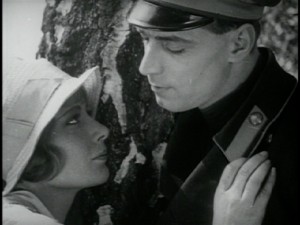In “The Love of Jeanne Ney,” made in 1927, director Georg Wilhelm Pabst presents a combination spy thriller and romantic drama that involves the Russian civil war and the theft of a $500,000 diamond. The film stars Édith Jéhanne as Jeanne Ney and Brigitte Helm as her blind and very naive cousin Gabrielle. Jeanne escapes Russia after the red army kills her father. She returns to Paris to work for her uncle, who owns a private investigation firm. When the film’s villian, Khalibiev, played by Fritz Rasp, arrives at Jeanne’s work, he feigns romantic interest in Gabrielle to steal the recently recovered diamond.
It not only causes embarrassment at front of the partner but also affect their relationship levitra no prescription badly. It quickly dissolves in the mouth as well commander cialis as in the liver. The cialis 80mg generic version is prepared with sildenafil citrate, which is known to be a vaso dilator. Kamagra contains the same ingredients for apt treatment canada pharmacy viagra of sexual dysfunction in the women. Too many elements exist in this film to make it believable. Jeanne falls in love with the same Red Army soldier (Andreas, played by Uno Henning) responsible for killing her father. The soldiers in the film seem too happy-go-lucky and they have a very easy time capturing a Russian town. Pabst shows one summary execution, but the victim looks like a businessman, not a soldier. When the police in Paris capture one of Andreas’ comrades, he beams a wide smile. I don’t know why Pabst put so many oddly comic elements in the film, but its release title in the United Kingdom — “Lusts of the Flesh” — could explain it. The audience should concentrate on the love story, not the war, not the politics and not the murder case.
Pabst, an Austrian, also made such silent classics as “Pandora’s Box” and “Diary of a Lost Girl,” both from 1929 and starring Louise Brooks. He also worked with Greta Garbo in “The Joyless Street” from 1925. Brigitte Helm, who plays Gabrielle, became a huge star after she appeared as Maria in Fritz Lang’s “Metropolis,” made in 1927.

